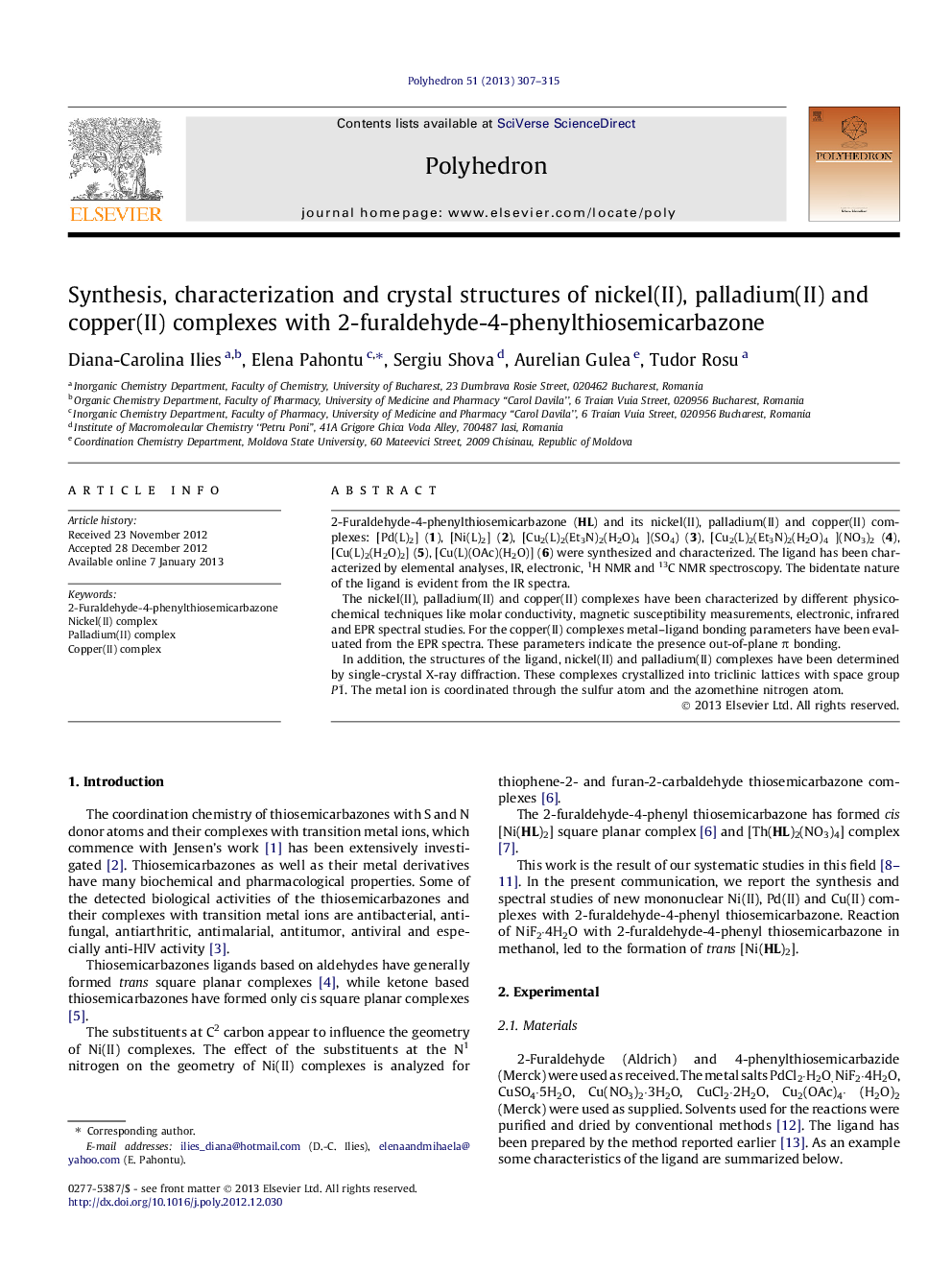| Article ID | Journal | Published Year | Pages | File Type |
|---|---|---|---|---|
| 1337178 | Polyhedron | 2013 | 9 Pages |
2-Furaldehyde-4-phenylthiosemicarbazone (HL) and its nickel(II), palladium(II) and copper(II) complexes: [Pd(L)2] (1), [Ni(L)2] (2), [Cu2(L)2(Et3N)2(H2O)4 ](SO4) (3), [Cu2(L)2(Et3N)2(H2O)4 ](NO3)2 (4), [Cu(L)2(H2O)2] (5), [Cu(L)(OAc)(H2O)] (6) were synthesized and characterized. The ligand has been characterized by elemental analyses, IR, electronic, 1H NMR and 13C NMR spectroscopy. The bidentate nature of the ligand is evident from the IR spectra.The nickel(II), palladium(II) and copper(II) complexes have been characterized by different physicochemical techniques like molar conductivity, magnetic susceptibility measurements, electronic, infrared and EPR spectral studies. For the copper(II) complexes metal–ligand bonding parameters have been evaluated from the EPR spectra. These parameters indicate the presence out-of-plane π bonding.In addition, the structures of the ligand, nickel(II) and palladium(II) complexes have been determined by single-crystal X-ray diffraction. These complexes crystallized into triclinic lattices with space group P1¯. The metal ion is coordinated through the sulfur atom and the azomethine nitrogen atom.
Graphical abstract2-Furaldehyde-4-phenylthiosemicarbazone (HL) and its nickel(II), palladium(II) and copper(II) complexes were synthesized and characterized. The ligand has been characterized by elemental analyses, IR, electronic, 1H NMR and 13C NMR spectroscopy.In addition, the structures of the ligand, nickel(II) and palladium(II) complexes have been determined by single-crystal X-ray diffraction.Figure optionsDownload full-size imageDownload as PowerPoint slide
